The DU Lounge
Related: Culture Forums, Support ForumsAeroplane In A Bottle --- Flying the Mail on Route 18, April, 1934
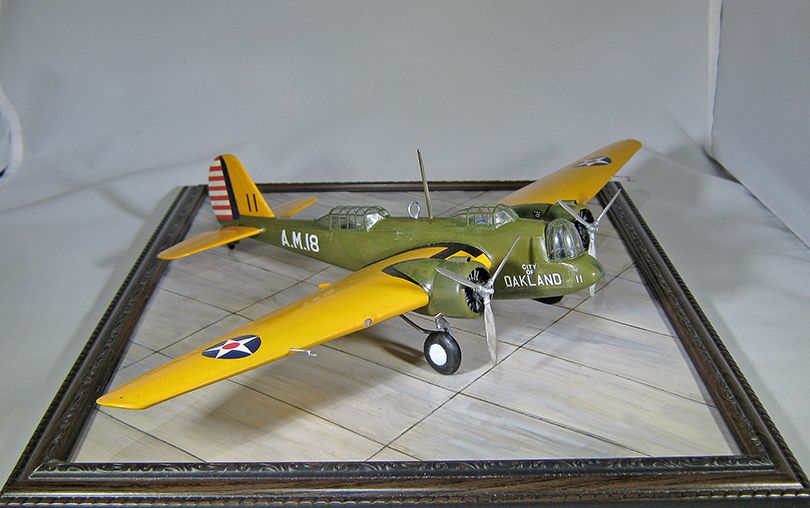
The Martin B-10 was a revolutionary advance in bomber design when it was offered to the United States Army Air Corps in 1932. Its first active service use by the Army Air Corps, however, was quite pacific: carrying air mail for the Post Office.
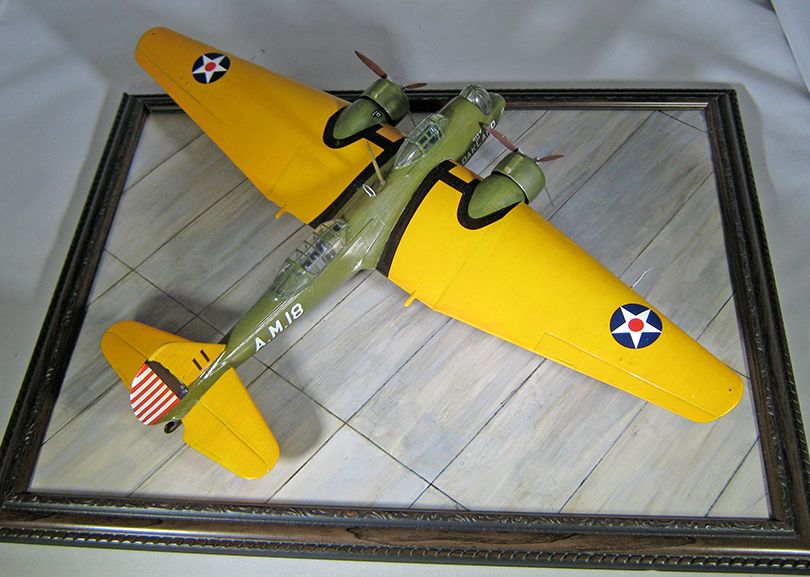
After extensive development from Martin's Model 123, the company received a trials contract for 14 machines, designated YB-10. Delivery of Martin's new 'Air Power Wonder' (as a leading officer of the Army Air Corps described it) began in November, 1933, when the first YB-10 was accepted by the Materials Division at Wright Field. The purpled style of aviation commentary at that time is infectious, when one reads a good deal of it, and some of its usages survive into present day descriptions of the Martin bomber. The machine is generally described still as 'all metal', though in fact the rear third of the wings was fabric covered. A metal structure covered with fabric was not uncommon at the time, and such a design was often described then as 'all metal' as opposed to wooden, or of mixed wood and metal construction, with fabric covering being taken for granted. The new Martin bomber was hardly 'all metal' in the sense that such commercial transports as the roughly contemporaneous Douglas DC-1 or Lockheed Electra or Boeing 247 were. These all employed aluminum stress-skin construction for all structural elements. While some of the Martin's covering employed this most modern technique, some portions were covered in old-fashioned corrugate sheet. The gun position in the Martin's nose is generally called a turret, but enclosed gun ring would be closer to the mark, for the gun was still traversed and elevated manually, rather than by hydraulic or electric power. Nor, for that matter, is it clear whether the quoted maximum speeds were achieved with a weight of bombs aboard or not. Still, gilded though the lily was by its boosters, the YB-10 remained an extraordinary advance in applied technology for military purposes in its time. Probably more than any other single aircraft, Martin's speedy bomber gave life and legs to the doctrine that 'the bomber will always get through' which would dominate Army Air Corps theorizing throughout the decade before World War Two.
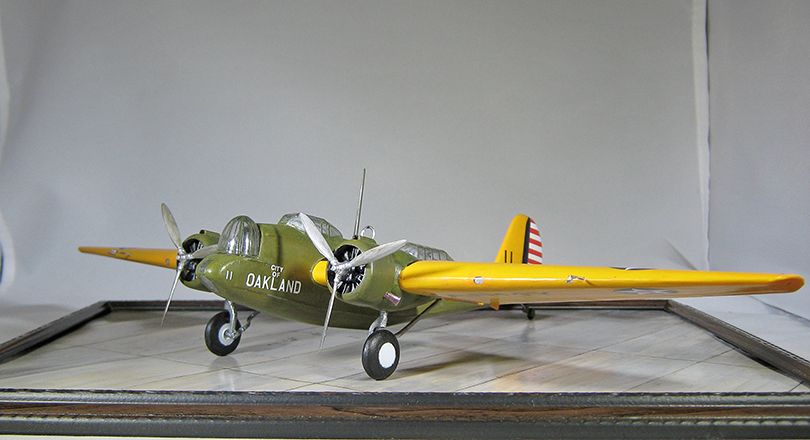
While newly arrived YB-10s were being put through their paces in the skies of Ohio, in Washington D.C. a long simmering scandal concerning allocation of contracts for transporting air mail was coming to a boil. What bubbled up out of public hearings in the Senate during January of 1934 would come to scald the Army Air Corps badly.
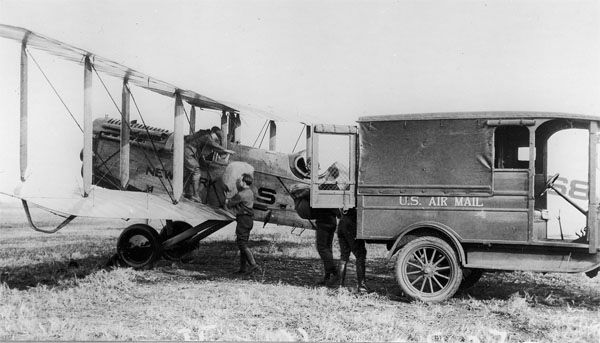
('Liberty' DeHaviland DH-4b mail plane conversion operated by the Post Office circa 1920)
Transport of mail by air in the United States had begun as a wholly government service, flown first by Army Air Service personnel and equipment between Washington D.C. and New York, and then expanded nationwide by a fleet of aeroplanes operated by the Post Office itself. During the Coolidge administration, the Post Office air fleet was sold off, and contracts for transport of air mail offered to private firms. The intent was to foster development of commercial aviation, and the aviation industry in general. The rates paid the companies were based on weight and distance, and were much in excess of what was charged for air mail postage. The system spawned many small companies wholly dependent on the subsidized rates, without ability or desire to expand further into carriage of passengers and freight. It also conduced to a good deal of sharp practice by the contractors, who found various ways to game the rates --- in one widely reported instance, an air mail contractor sent out a mass of Christmas cards by air mail, which it carried itself, and received in payment twice what it had put up for postage to do so.
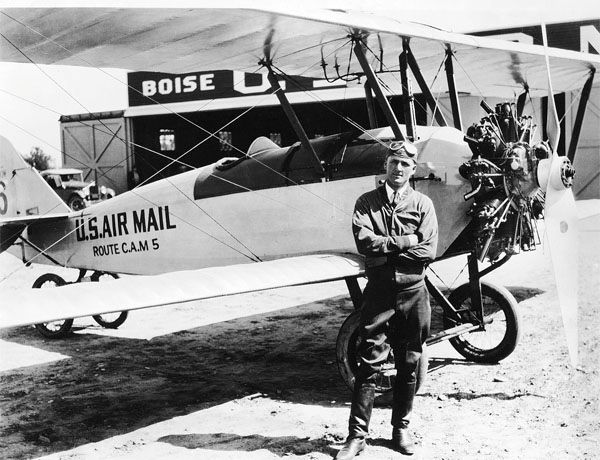
(One of six Swallow 'Commercial' mailplanes operated by Varney Air Lines of Boise, Idaho, in 1926; the company was bought up in 1930 by United Aircraft and Transport, ancestor of United Airlines)
President Hoover's Postmaster General in 1929 pushed through a complete revision of the air mail system. The new arrangements had some features which, on their face, struck many as quite odd. Chief among these was that contractors would be paid according to the amount of mail they were capable of carrying, whether or not that capacity was actually used for transporting mail. The effect of this was to encourage formation of larger companies, with larger airplanes, that could become quite profitable on passenger service with a steady base of Post Office subsidy, amounting in some instances to roughly half their revenues.
The fuse to full-blown scandal was lit when a small air service owner complained to a newspaperman friend that his bid for an air mail contract had been rejected even though he had asked but a third of the price which would be paid the large firm which was the winning bidder. Close inquiry into the matter revealed several things. The new system was certainly efficient, it was quite able to handle the greater volume of mail a 50% cut in air mail postage produced. The system served well, too, its intended purpose of fostering commercial aviation and the aviation industry. Passenger service expanded greatly, and manufacturers bent their efforts to provide new and better aircraft for this growing market. However, the initial contracts establishing the system had been passed out to several holding companies in a private conference between the Postmaster General and a few airline executives effectively joined together in a cartel. These favored companies were able to quickly form large air fleets, driving smaller firms to the wall and snapping them up at fire-sale prices, and while this was going on, there was a good deal of raw stock manipulation by insiders who reaped spectacular profits.

(Douglas M-3 mailplanes of National Air Transport in 1927. The planes were bought at auction when the Post Office liquidated its fleet. NAT was at the time the best capitalized air transport company in the country. It, too, was bought out by United Aircraft and Transport in 1930.)
By the time the Senate took up the matter in public hearings, headed by Sen. Hugo Black in January, the 'spoils conference' held by the former Postmaster was notorious. Gaudy details such as the frequent 'loss' of official records, some possibly burnt by the Postmaster's secretary, and instances where trifling investments had made fortunes overnight for men who were in the know about what was going on with the mail, made for an excellent show, which was capped by the use, for last time to date, of the Congressional power of inherent contempt to put a man in jail for refusing to answer questions under oath. Early in February, as the Roosevelt administration cast about for some way to deal with the situation, in which the existing contracts were simply untenable as a political proposition, the Secretary of War suggested that the Army Air Corps could fly the mail. The commander of the Army Air Corps, Gen. Foulois, was accordingly consulted. Just what he said then has not been clearly preserved; there are several different versions, some of them by the General himself, set down at different times. But whatever it was he actually said, his answer was taken as a hearty affirmative by the Roosevelt administration, which announced existing contracts for carrying air mail were rescinded, and that starting February 19th, the U.S. Army Air Corps would handle the job.
It was understandable people without a grounding in aviation would believe the Army Air Corps was up to this task. Gen. Foulois was to some extent the victim of his own policy of publicity for the Army Air Corps, intended to gain popular support in budget battles for his command. Events such as the flight of a pursuit squadron from Detroit to Washington D.C., or the transcontinental flight of a squadron of bombers to join in annual manouvers, were boosted to the newspapers as representing everyday capabiities of the Army Air Corps, rather than as the 'one-offs' requiring long preparation, and considerable overhaul for the machines afterwards, that they actually were. Army pilots had little experience of the 'airways' system of radio navigation beacons employed by commercial pilots. Army aircraft generally lacked the full suite of instruments fitted to commercial machines, and when these were present, most Army pilots had as yet little training in their proper use. People in the business of aviation expected fiasco if not disaster, and to rub that in, on the final day civil air mail contracts were still in force, Eddie Rickenbacker, America's premier Great War aviator and now a vice-president of Eastern Air Transport, flew the new Douglas DC-1 prototype from Los Angeles to Newark with a load of mail, setting as he did a new transcontinental record.
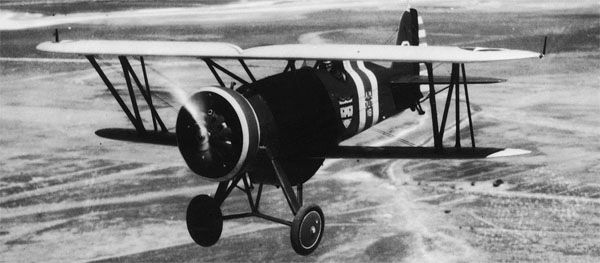
(A Boeing P-12E pursuit single-seater on air mail service on the west coast)
Between Valentine's Day, when Gen. Foulois assured Congress all would proceed satisfactorily, and the 19th, when the Army was scheduled to take over the air mail, three Army fliers died in crashes while on familiarization flights over the routes they were to fly. A blizzard greeted the start of the Army's air mail operation, cancelling the intended flagship flight from Newark. Even when weather permitted, much of the Army's equipment simply was unsuited to the task. Pursuit machines employed on feeder flights could not carry mail sacks without severe displacement of their center of gravity, and this afflicted some light observation types as well. Several crashes were attributed to the shifting of mail sacks in their improvised stowage rendering machines uncontrollable. The old-fashioned Keystone bombers, big, seemingly antique biplanes, could handle the weight of the mail, but were not much faster overall than a fast train, especially in adverse weather and headwinds. Gen. Foulois added to these difficulties by holding his most experienced pilots back from the mail runs, so that these were mostly flown by recent trainees with scant experience of either bad weather or night flying on instruments.
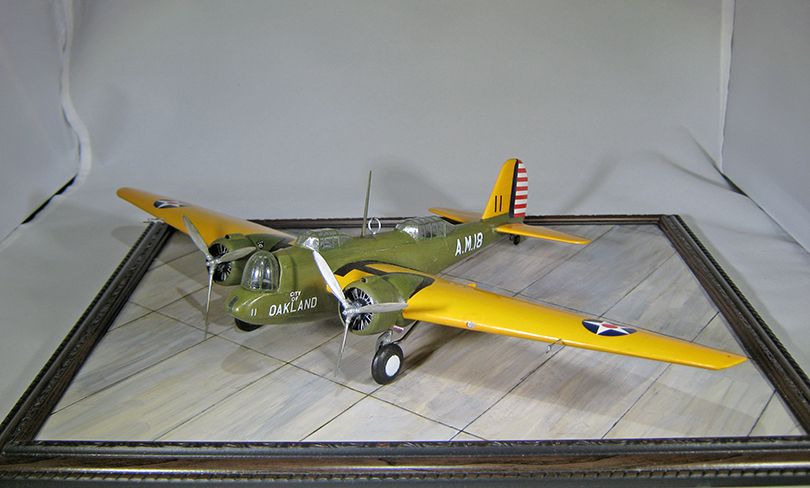
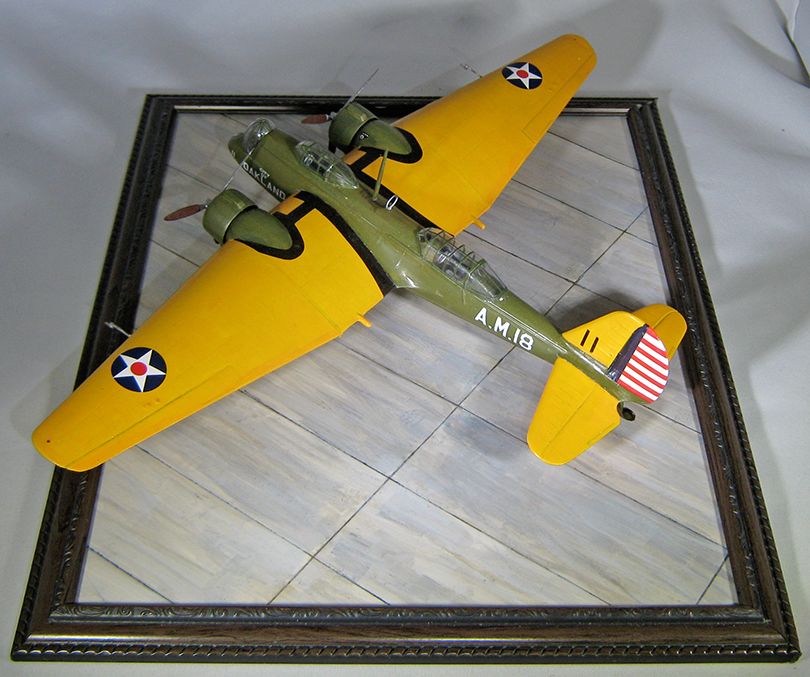
The nation's newspapers turned on a dime from 'scandalous contracts' to lambasting the 'murder' of young Army pilots, a pivot greased by the tremendous loss of income inflicted on commercial aviation firms by loss of their air mail contracts. Army air mail flights were suspended on March 10, after another rash of fatal crashes. Nine days later they resumed, but with a great reduction in number of routes, and in mileage to be flown. In April the new Martin YB-10s were assigned to the air mail operation, handling long distance routes from both coasts. They were eminently suited to the task, but even these had some difficulties; on two occasions, pilots bellied them in because they had forgotten they had to lower landing gear --- that task was not yet a familiar one to even experienced Army pilots. Early in May, the Roosevelt administration pulled the plug on the Army's air mail operation, and began turning air mail carriage back to commercial companies. On May 7th, the last day the Army was the sole carrier of air mail, four YB-10s flew from Oakland to Newark with a load of mail, covering more distance than Rickenbacker had in the DC-1 in February, and achieving a higher average ground speed than he had while doing so. This at least ended the air mail fiasco on a higher note for the Air Corps. When new air mail contracts were let, participants in the 'spoils conference' were banned from any share in them, but this restriction was easily evaded by creative restructurings and re-namings. There was no discernable difference between the system in place from May, 1934 on and what had come to seem so scandalous late in the previous year. About the only real changes were that Gen. Foulois no longer commanded the Army Air Corps, and that Army flight training began to stress flying by instruments and in bad weather.
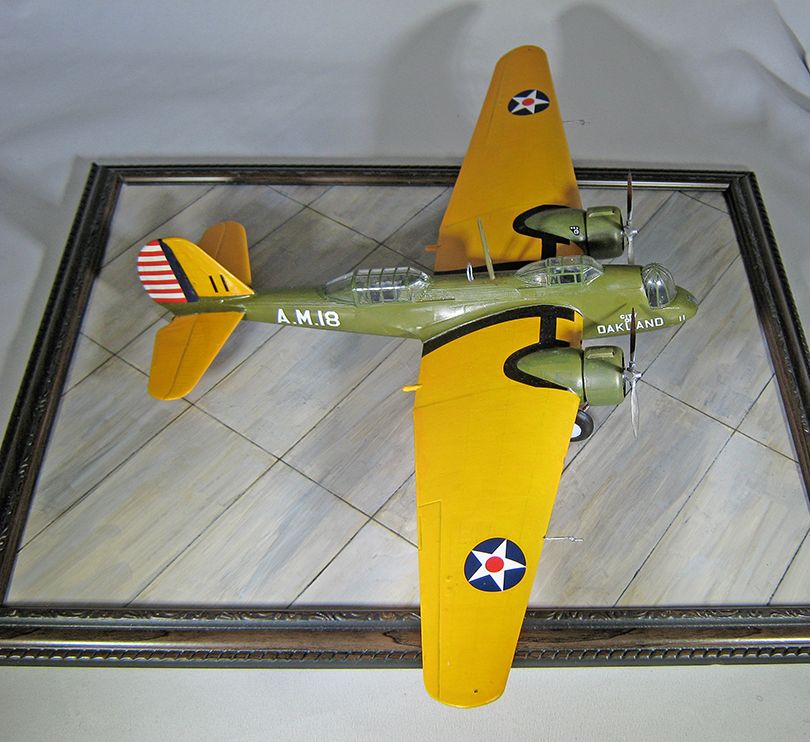
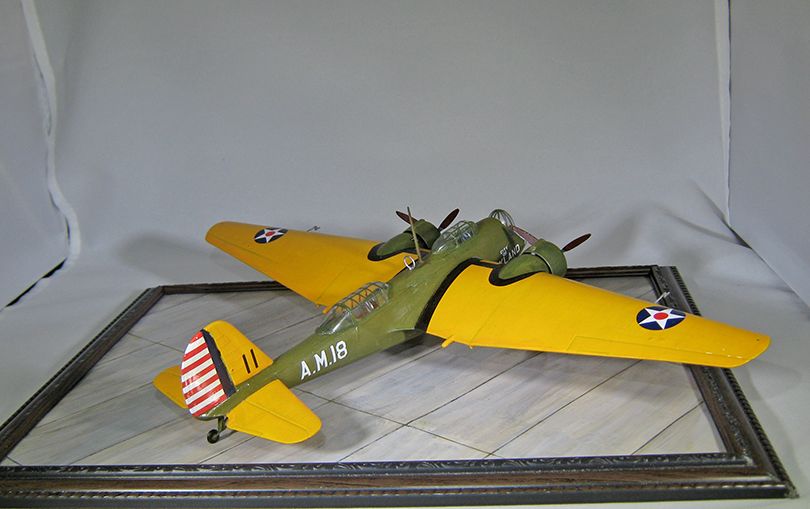
The YB-10s went on to other high publicity flights, including a mass flight of ten to Alaska and back in July of 1934, doing much to restore the popular reputation of the Army Air Corps. They went then into squadron service at March Field in California, with the 7th Bomber Group. The main production variant would be the B-10B, which Martin began delivering to the Army in 1935. On the B-10B, arrangements for exhausts and air intakes differed from those of the YB-10, but there were no other differences worth noting between them. Later in the design's production run, Pratt and Whitney radials were substituted for the original Curtiss-Wright Cyclones, and this version was designated the B-12. By 1938 Martin's 'Air Power Wonder' was being eased out of first line service in the United States by the Douglas B-18 (a derivative of the DC transport series) and the early marques of the Boeing B-17. The displaced B-10s and B12s were consigned to service overseas, in Panama, the Phillipines, and Hawaii. None remained in U.S. service by Pearl Harbor in any but auxiliary roles.
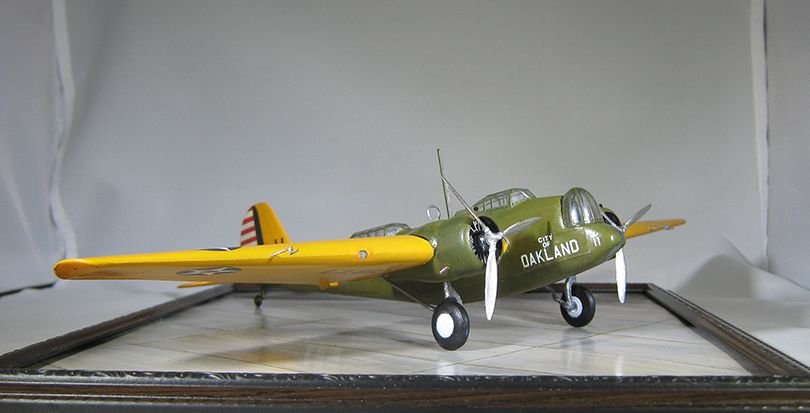
This model, in 1/72 scale (six feet to the inch), represents the first YB-10 to go into air mail service on the west coast, ceremonially dubbed 'City of Oakland' in a formal christening on April 19, 1934. Though I am not certain, I strongly suspect this machine was the flagship for the final trans-continental mail run on May 8th. All YB-10s were delivered in Olive Drab and Orange Yellow, and while on air mail service were not repainted in accordance with the February directive that fuselages be rendered blue in future, though they were repainted before the Alaska flight.
Here is footage of YB-10 'City of Oakland' in flight, and at its christening....
http://mirc.sc.edu/islandora/object/usc%3A12361
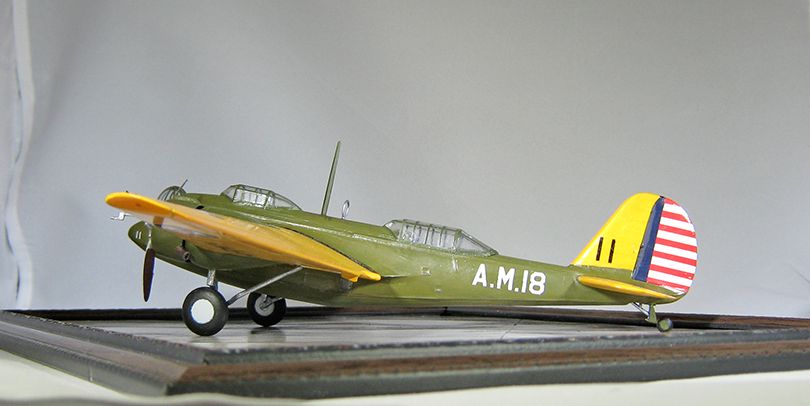

yonder
(9,657 posts)The Swallow aircraft operated by Varney Air Lines photo was taken at the old Boise airfield site. That site is now occupied by the campus of Boise State University. The current airport and Gowen field are now several miles south of town.
Most often found in the west, there are remnants of "beacon stations" used by those air mail pilots. Usually they are just the broken down remains of the concrete directional arrows used to visually direct pilots to the next station. In bad conditions, it must have been harrowing for pilots to pin their hopes on finding the next station.
I've been to several of these found in the southern part of my state:
https://www.citylab.com/life/2015/02/why-is-america-dotted-with-giant-concrete-arrows/385472/
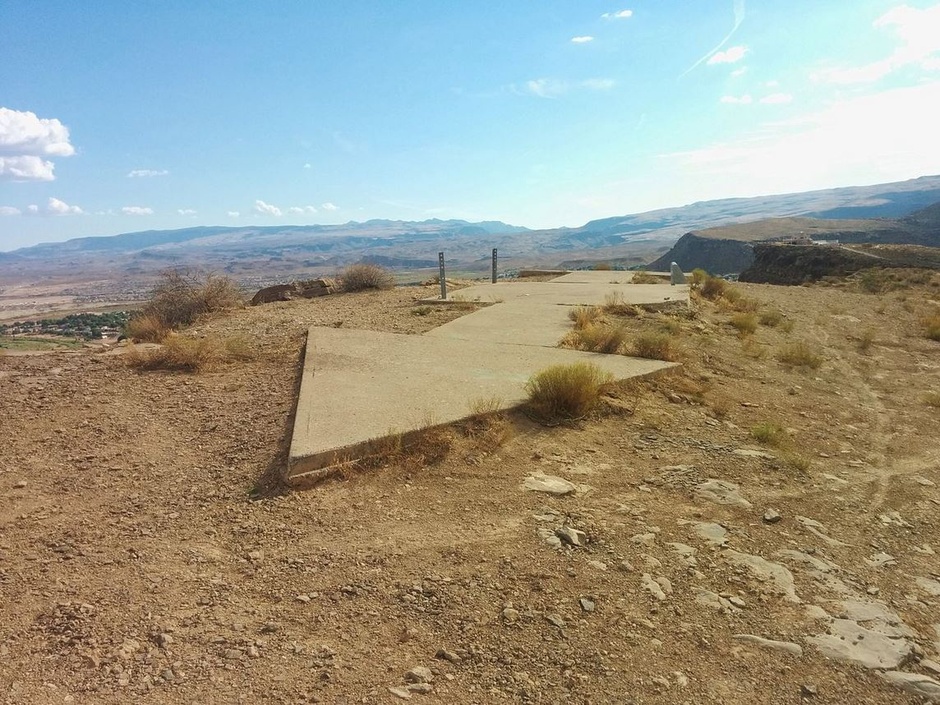
http://www.dreamsmithphotos.com/arrow/index.html
The Magistrate
(95,243 posts)I had no idea remnants survived. That is quite a picture.
There is something about that 'Swallow' photograph which had me looking into the possibility of scratch-building a model of the machine in it, even though I do not usually do civil machines. I have done more biplanes than monoplanes, and for some of the more obscure items, like early Breguets, or Farmans, scratch-building is the only option. I like to have a story behind a model, and because this one is tied to some interesting political events, and serious questions of industrial policy, I thought it might make a better subject for display here.